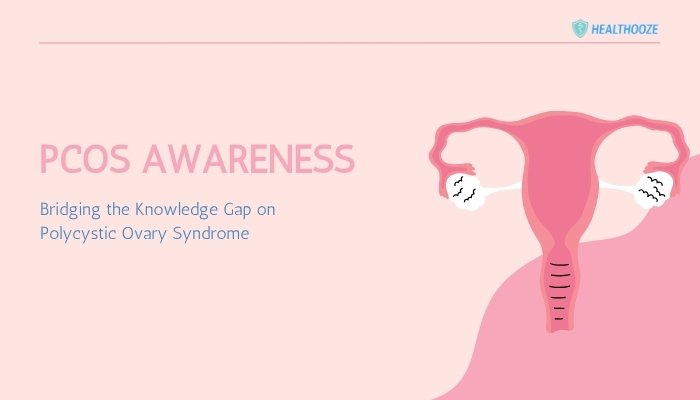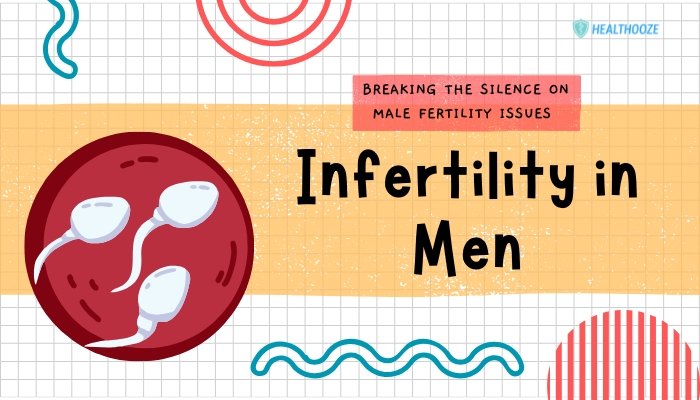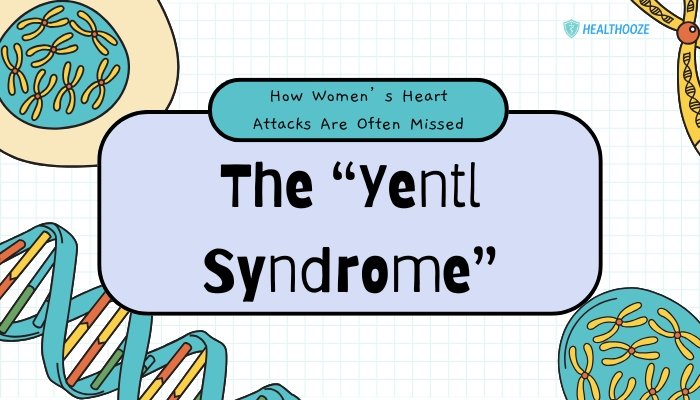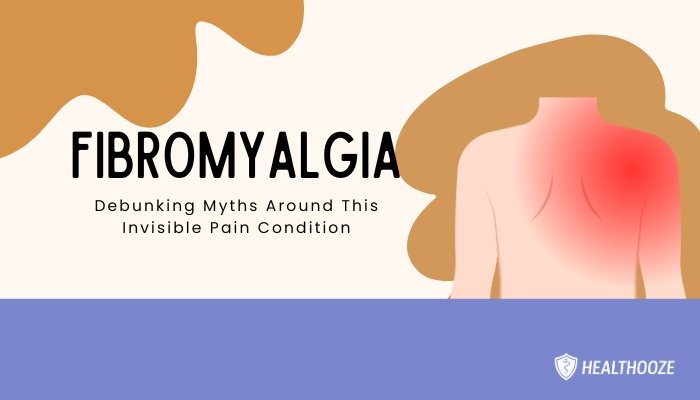Introduction
Polycystic Ovary Syndrome (PCOS) is an endocrine disorder that affects millions of people assigned female at birth, often beginning in adolescence or early adulthood. Characterized by hormonal imbalances, PCOS can lead to irregular menstrual cycles, elevated androgen levels, and the presence of multiple small cysts on the ovaries.
Although it is one of the most common endocrine conditions, the exact prevalence remains underreported, partly due to inconsistent diagnostic criteria and inadequate awareness. For those living with PCOS, symptoms like infertility, weight fluctuations, and excessive hair growth (hirsutism) can cause both physical complications and emotional distress.
Despite its frequency and impact, PCOS often goes overlooked in health discussions, overshadowed by more recognized reproductive issues. This article aims to increase understanding of PCOS by clarifying its hallmark features, exploring potential causes, highlighting diagnostic pathways, and outlining evidence-based treatments and lifestyle strategies.
By closing the knowledge gap, individuals with PCOS and their support networks can move toward more empathetic care and better long-term health outcomes.
Understanding PCOS
What is PCOS?
PCOS is a hormone-related condition stemming from an excess of androgens (male hormones) and insulin resistance. It typically results in disrupted ovulation, manifesting in fewer or absent menstrual cycles, as well as various metabolic and cosmetic changes. The name “polycystic” describes the appearance of ovaries on ultrasound—often containing numerous small follicular cysts. However, not everyone with PCOS will present obvious ovarian cysts; the condition is diagnosed through a combination of symptoms, blood test markers, and ultrasound findings.
Diagnostic Criteria
Most commonly, clinicians refer to the Rotterdam Criteria, which require at least two of the following three features for a diagnosis:
- Oligo-ovulation or Anovulation (infrequent or absent ovulation, evidenced by irregular periods).
- Clinical or Biochemical Signs of Hyperandrogenism (excess androgen levels leading to acne or hirsutism).
- Polycystic Ovaries on Ultrasound (≥12 small follicles per ovary or increased ovarian volume).
Since other conditions can mimic these signs, doctors must rule out disorders like congenital adrenal hyperplasia, thyroid issues, or hyperprolactinemia.
Prevalence and Impact
- Widespread Condition: Approximately 6-10% of people of reproductive age are affected globally, although some studies suggest even higher rates.
- Diverse Manifestations: PCOS is not a one-size-fits-all condition. Some individuals primarily encounter weight management issues, whereas others grapple with severe acne or fertility obstacles.
- Long-Term Risks: Untreated PCOS increases the likelihood of type 2 diabetes, hypertension, and cardiovascular complications, highlighting the need for early detection and management.
Causes and Risk Factors
Hormonal Imbalances
- Excess Androgens
- The adrenal glands or ovaries produce heightened levels of testosterone and other androgens, disrupting normal ovulation.
- This imbalance can lead to hirsutism (excessive facial or body hair), acne, or scalp hair thinning.
- Insulin Resistance
- Many with PCOS exhibit insulin resistance, prompting the pancreas to produce additional insulin.
- Elevated insulin, in turn, stimulates androgen production, perpetuating a harmful cycle.
Genetic and Family History
- Inherited Susceptibility: Having a close relative (mother, sister) with PCOS may indicate a genetic predisposition.
- Complex Genetic Architecture: Likely multiple genes contribute, each adding small increments of risk.
Lifestyle Factors
- Obesity and Sedentary Habits: Excess weight can worsen insulin resistance, intensifying PCOS symptoms. However, PCOS can also occur in lean individuals.
- Diet Quality: High intake of processed foods or sugary beverages correlates with greater insulin dysregulation.
- Stress: Chronic stress influences hormone fluctuations, potentially aggravating PCOS.
Common Signs and Symptoms
Menstrual Irregularities
- Oligomenorrhea: Long intervals (e.g., >35 days) between periods.
- Amenorrhea: Complete absence of menses for several months.
- Menorrhagia: Sometimes periods, when they do occur, may be abnormally heavy or prolonged.
Hyperandrogenic Symptoms
- Hirsutism: Excessive facial, chest, or back hair.
- Acne: Persistent or cystic forms often resistant to routine skincare.
- Androgenic Alopecia: Thinning hair at the crown or front scalp resembling male-pattern baldness.
Metabolic Challenges
- Weight Struggles: Difficulty losing weight due to insulin resistance; central obesity is common.
- Type 2 Diabetes Risk: Insulin dysregulation escalates the chance of impaired glucose tolerance and full-blown diabetes.
- Dyslipidemia: Irregular cholesterol or triglyceride levels raising cardiovascular concerns.
Fertility Obstacles
Irregular or absent ovulation makes achieving pregnancy challenging. PCOS is a leading cause of anovulatory infertility, though fertility treatments often yield good success rates when tailored correctly.
Diagnosis and Evaluation
Medical History and Physical Examination
Clinicians evaluate cycle regularity, weight changes, and development of androgen-excess signs. Checking family history of diabetes or PCOS can also provide clues.
Laboratory Tests
- Hormone Panels: Serum testosterone, DHEAS, LH:FSH ratio, and other markers.
- Glucose and Insulin Levels: To screen for prediabetes or insulin resistance.
- Thyroid Function: To exclude hypothyroidism, which can mimic certain PCOS symptoms.
Imaging Studies
- Ultrasound: Pelvic ultrasound (particularly transvaginal) can identify polycystic ovaries, counting follicles and measuring ovarian volume.
- Differential Diagnosis: Other conditions causing irregular menses or hirsutism must be excluded (e.g., nonclassic congenital adrenal hyperplasia, hyperprolactinemia).
Treatment Approaches
Lifestyle Modifications
- Nutritional Changes: Emphasizing whole grains, lean proteins, and limiting refined sugars can help stabilize insulin levels.
- Regular Exercise: Helps manage weight, insulin sensitivity, and mood. Low-impact routines, cardio, or strength training can be beneficial.
- Weight Management: Even a moderate weight reduction (5-10% of body weight) can restore menstrual cycles and improve metabolic markers.
Pharmacological Therapies
- Oral Contraceptives
- Combined estrogen-progestin pills regulate cycles, curb androgen levels, and reduce hirsutism/acne.
- Often the first-line therapy for those not seeking pregnancy.
- Insulin Sensitizers (Metformin)
- Commonly prescribed to boost insulin sensitivity and assist with restoring ovulatory function.
- Particularly helpful if prediabetic or with obesity-driven insulin resistance.
- Antiandrogens
- Spironolactone or flutamide lower androgenic effects, mitigating hirsutism or acne.
- Ovulation Induction
- Clomiphene citrate, letrozole, or gonadotropins can trigger ovulation in those with fertility aims.
Surgical Options
- Ovarian Drilling: A laparoscopic procedure creating small punctures in the ovarian cortex to reduce androgen production, possibly restoring ovulation.
- Bariatric Surgery: In specific cases with severe obesity, this approach might indirectly ameliorate PCOS by improving metabolic health.
Psychological and Emotional Considerations
Mental Health Impact
- Stress from Symptoms: Chronic acne or hirsutism affects self-image; unpredictable periods or fertility hurdles can create anxiety or depression.
- Social Pressures: Feeling “unfeminine” due to hair growth or weight challenges might lead to isolation or low self-confidence.
Support Networks and Therapy
- Peer Groups: Online or local PCOS communities reduce isolation and share lifestyle tips.
- Professional Counseling: Therapists can help women navigate body image issues, fertility fears, or relationship stress.
- Family Education: Involving family or partners fosters empathy and consistent support for behavior changes or medication adherence.
Living with PCOS: Practical Tips
- Track Symptoms: Apps or calendars noting cycle length, weight changes, mood fluctuations, or medication side effects.
- Routine Health Checks: Periodic diabetes screening, lipid panels, and blood pressure monitoring.
- Skincare and Hair Removal: Consultation with dermatologists or endocrinologists for combined approaches addressing acne or excessive hair.
- Stress Reduction: Yoga, mindfulness, or journaling can calm stress that aggravates insulin and hormone imbalances.
Breaking the Knowledge Gap and Stigma
Awareness Campaigns
Organizations like the PCOS Challenge or Cyster & Co lead public initiatives, reminding that PCOS is a manageable endocrine condition deserving the same attention as other common ailments.
Medical and Public Education
- Professional Training: GPs, nurses, and allied health staff benefit from updated guidelines ensuring prompt referral to endocrinology or gynecology.
- Mainstream Media: Celebrity stories (e.g., sports figures, actors) sharing personal PCOS journeys can reshape public perception from shame to empowerment.
Advocacy and Policy
- Insurance Coverage: Pressing for comprehensive coverage of fertility treatments, hormonal therapies, or dietitian consults.
- Research Funding: Encouraging philanthropic or government grants to unravel PCOS’s genetic underpinnings and develop novel therapeutics.
- Mental Health Integration: Normalizing psycho-nutritional support in standard PCOS care protocols.
Conclusion
Polycystic Ovary Syndrome (PCOS) stands out not only as a leading cause of infertility but also as a major metabolic and emotional challenge for those affected. Yet, confusion, misdiagnosis, and social stigma often compound its health ramifications. Greater awareness, robust scientific research, and holistic treatment approaches can indeed close the knowledge gap. When individuals with PCOS receive coordinated support—encompassing hormonal management, psychological counseling, and lifestyle modifications—their journey can become less daunting, paving the way for improved reproductive outcomes, enhanced self-confidence, and overall well-being.
Empowering patients and providers alike with accurate information is key. By bridging this knowledge gap, we encourage timely diagnoses, targeted therapies, and a supportive environment that acknowledges the multifaceted nature of PCOS. Ultimately, understanding and collaboration can transform what has long been regarded as an invisible ailment into a well-recognized condition, approached with empathy and state-of-the-art medical care.
References
-
- Goodman NF, Cobin RH, Futterweit W, et al. American Association of Clinical Endocrinologists’ guidelines for clinical practice for the diagnosis and treatment of hyperandrogenic disorders. Endocr Pract. 2015.
-
- Rotterdam ESHRE/ASRM-Sponsored PCOS Consensus Workshop Group. Revised 2003 consensus on diagnostic criteria and long-term health risks related to polycystic ovary syndrome. Fertil Steril. 2004.
-
- Azziz R, Carmina E, Dewailly D, et al. The Androgen Excess and PCOS Society criteria for the polycystic ovary syndrome: the complete task force report. Fertil Steril. 2009.
-
- Legro RS, Arslanian SA, Ehrmann DA, et al. Diagnosis and treatment of PCOS: an Endocrine Society clinical practice guideline. J Clin Endocrinol Metab. 2013.
-
- Goodarzi MO, Dumesic DA, Chazenbalk G, et al. Polycystic ovary syndrome: etiology, pathogenesis and diagnosis. Nat Rev Endocrinol. 2011;7(4):219–231.
-
- Moran LJ, Misso ML, Wild RA, et al. Impaired glucose tolerance, type 2 diabetes and metabolic syndrome in polycystic ovary syndrome: a systematic review and meta-analysis. Hum Reprod Update. 2010.
-
- Garruti G, Depalo R, De Angelis M. Weighing the impact of diet and lifestyle in polycystic ovary syndrome. Curr Med Chem. 2012.
-
- Teede HJ, Misso ML, Costello MF, et al. Recommendations from the international evidence-based guideline for the assessment and management of PCOS. Hum Reprod. 2018.
-
- Pasquali R. Obesity and androgens: facts and perspectives. Fertil Steril. 2006.
-
- Azziz R, Woods KS, Reyna R, et al. The prevalence and features of the polycystic ovary syndrome in an unselected population. J Clin Endocrinol Metab. 2004.
-
- Barry JA, Kuczmierczyk AR, Hardiman PJ. Anxiety and depression in polycystic ovary syndrome: a systematic review and meta-analysis. Hum Reprod. 2011.
-
- Sills ES, Perloe M, Palermo GD. A systematic approach to diagnosing PCOS and advanced options for fertility management. Reprod Biomed Online. 2017.






